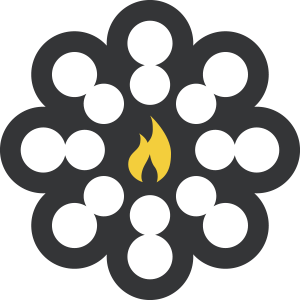Experience Foundations:
Jobs to be Done
Customers have strong, if often unconscious, expectations of solutions they hire to help them. Experience strategists who understand the archetypes of jobs-based experiences are more likely to create value for the customer and the company.
What is “Jobs-to-be-Done?”
Jobs to be done is a strategic discipline that focuses on creating value for customers by understanding what customers want in a given situation.
“Job” is shorthand for what an individual really seeks to accomplish in a given circumstance. But this goal usually involves more than just a straightforward task; consider the experience a person is trying to create. The circumstances are more important than customer characteristics, product attributes, new technologies, or trends.
Many companies focus their data gathering efforts exclusively on the ‘who’ about customers. They want to know their customers’ preferences, attitudes, demographics, and spending patterns. They develop sophisticated market segmentation based on these attributes that seem to describe the ideal customer for a particular product. This ‘who’ data has been shown to actually obscure the company’s understanding of what customers are trying to accomplish during their experiences with the company’s offerings.
Real value is created for customers when companies focus their insights on ‘what’ data.
We help companies better understand what is important to customers in unique situations, to uncover deep insights on the jobs to be done and then build solutions that ‘get the job done.’
Current and Past Clients
Customer Expectations for Different Types of Experiences
There are so many different situations that customers find themselves in. While each situation is unique, there are commonalities that experience strategists should pay attention to. These commonalities are expectations that most people have for what a good experience should include. For example, what customers expect from a search engine like Google is very different from what they expect from a movie from Disney.
Remember that you actually have to get the job done for the customer. It’s easy to sell customers on any number of different needs they may have, but your responsibility is to actually deliver on the situational needs that arise for customers.
The four primary categories of jobs to be done (JTBD) are:
Functional
Emotional
Social
Aspirational
Most Companies Do More than One Job for Customers
Companies who focus on the jobs and circumstances of their customers will soon find that their customers value a number of types of jobs that they do for them. For example, ‘planning a vacation for your family during the summer time’ describes the situation that the customer is in and implies a number of functional, emotional, social, and aspirational jobs to get done.
Example: Planning a vacation for your family during the summertime
-
Buying tickets for flights, packing bags, paying for services, finding food the experience, staying comfortable, getting around
-
Feeling safe while traveling, getting excited about vacation activities, avoiding boredom, feeling calm and rested
-
Connecting with family members, sharing experiences with friends, meeting new people, learning about different cultures.
-
Becoming a more well-rounded person, helping children to learn geography.
Once you begin to identify the jobs to be done, you will want to prioritize which are most important to your customer and to your company. We help you identify one ‘big job’ to get done, then organize the other jobs in order of importance under the big job.
Understanding jobs-to-be-done impacts the entire business model.
Our jobs-to-be-done model has 10 steps. Below are the first 7 steps:
Customer JTBD: Knowing the JTBD focuses the business on the customer.
Customer Journey: The map becomes about the customer rather than about the company’s process.
Value Proposition: The company’s unique offering to get the jobs done.
Channels, Tools, Environments: Deployed to support the customer appropriately, while delivering value to the company.
Customer Relationship: Capabilities deployed to strengthen the JTBD rather than to strengthen sales / support.
Revenue Streams: Become more robust as you build capabilities that get the jobs done for your customers.
Key Activities: Develop competencies in practices that really matter to your value proposition and to your customers.
What Our Clients Say
Gina Mangus, Flagler Health + EVP of Strategy & Advancement
“The research that Stone Mantel conducted on our behalf was integral to the development of our digital point of view and our road map, which we have nearly completed today. The depth and breadth of the research instilled confidence in our board that we were moving down the right path and supported buy-in from our physician partners and clinicians.”
Roger Beasley, Founder & Principal Candor




















































